Archive for the ‘Movements’ Category
Saturday, March 17th, 2018
“Schwitters began making collages in 1918 and produced them in large numbers for the remainder of his career. In 1919 he began using the term ‘Merz’ (which originated from the German word ‘Kommerz’, meaning ‘commerce’) to describe his principle of assembling found materials.”
— Louise Hughes
Das Kirschbild — a fitting followup for the previous entry on abstraction.
And for those of us who never tire of learning new things about the incomparable Master of Merz:
• from the Armitt Museum Collection in the Lake District
• from the Tate Britain
• from the Guggenheim
• from the Sprengel Museum Hannover

Merzbild 32 A. Das Kirschbild
Kurt Schwitters, 1921
The Museum of Modern Art, New York
Posted in Dada, Influences, K Schwitters, Links, Merz, Museums | No Comments »
Saturday, March 10th, 2018
“In the ’20s, dadaist Kurt Schwitters collected bits of detritus such as cigar bands and bus tickets and used them in collages. They were shocking then but with the passage of time have taken on the aura of classics: vibrantly colored and harmonious arrangements of abstract forms and only incidentally assemblages of junk.”
— John Ashbery
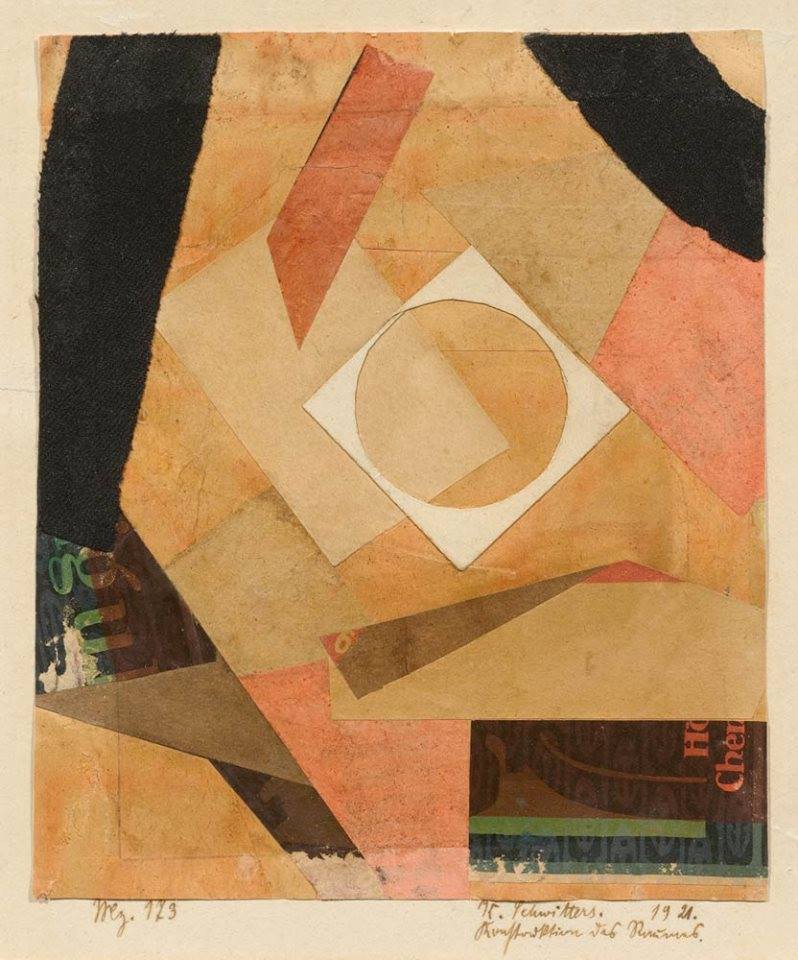
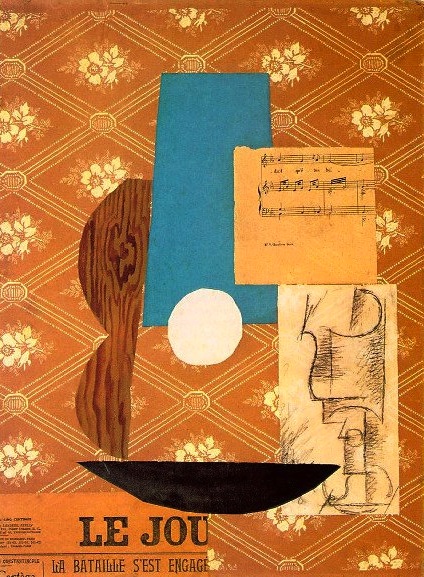 About a hundred years ago, a handful of Europeans had set out to invent what we now know as the medium of collage. Nearly all of them were painters. From the beginning, collage was rooted in modern art concepts that were emerging at the same time — the fundamentals of abstraction. Thus, the evolution of abstraction and collage in the 20th century are entwined, and remain so in a burst of contemporary activity in this post-centennial period. Next year will mark a full century of Merz. Artists working in collage abstraction carry the “creative code” of Kurt Schwitters and his seminal innovations.
About a hundred years ago, a handful of Europeans had set out to invent what we now know as the medium of collage. Nearly all of them were painters. From the beginning, collage was rooted in modern art concepts that were emerging at the same time — the fundamentals of abstraction. Thus, the evolution of abstraction and collage in the 20th century are entwined, and remain so in a burst of contemporary activity in this post-centennial period. Next year will mark a full century of Merz. Artists working in collage abstraction carry the “creative code” of Kurt Schwitters and his seminal innovations. 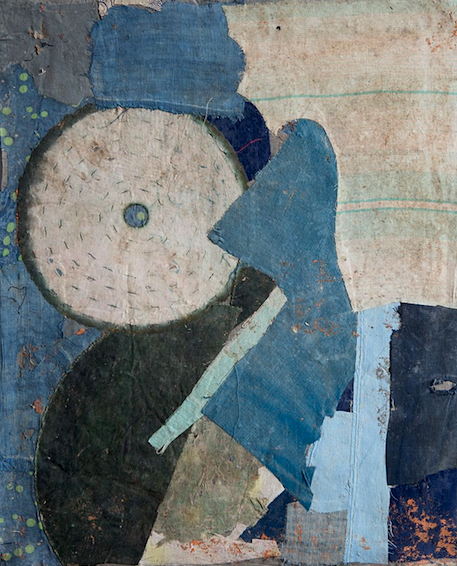 But, allow me to pause here and point out something that has become increasingly obvious: conventional art history was woefully male centered. Intentionally or not, the discipline would downplay or ignore many exceptional women artists, and that includes collage antecedents which were largely the domain of females, especially in the domestic or folk arts. For example, an interesting feature at moowon.com highlights the forgotten art of Chinese textile collage.
But, allow me to pause here and point out something that has become increasingly obvious: conventional art history was woefully male centered. Intentionally or not, the discipline would downplay or ignore many exceptional women artists, and that includes collage antecedents which were largely the domain of females, especially in the domestic or folk arts. For example, an interesting feature at moowon.com highlights the forgotten art of Chinese textile collage. 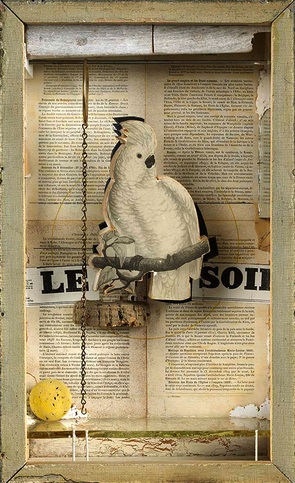 Picasso lifted visual ideas from tribal cultures. Cornell borrowed techniques tied directly to Victorian crafts. We understand that now. Modern art did not spring fully formed from the brow of Zeus like the armored goddess Athena. Fast forward to 2018. Many of the most accomplished and widely recognized collage artists of today are women. And the best part is that we know about them.
Picasso lifted visual ideas from tribal cultures. Cornell borrowed techniques tied directly to Victorian crafts. We understand that now. Modern art did not spring fully formed from the brow of Zeus like the armored goddess Athena. Fast forward to 2018. Many of the most accomplished and widely recognized collage artists of today are women. And the best part is that we know about them.
Melinda Tidwell is one of the dedicated abstractionists in collage that I enjoy following. She has a solid and very articulate designer “upstairs” guiding each decision, but her regard for the unexpected is a strong part of her intuition. Last summer, she published a two-part discussion of “order versus disorder” at her blogsite. It features abstractions by Lance Letscher and is well worth checking out.
Please indulge me as I share examples of collage abstraction from artists who continue to favorably capture my eye. Some of them range into mixed media in a way that remains very much collage. Others are strictly “painting with paper.”
Merz is alive and well in the 21st century, my friends.
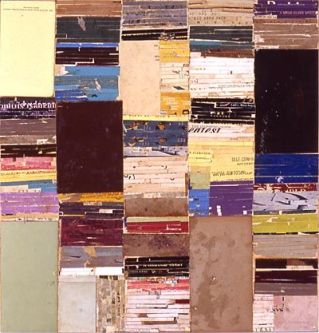
(title unknown)
abstract collage by L Letscher
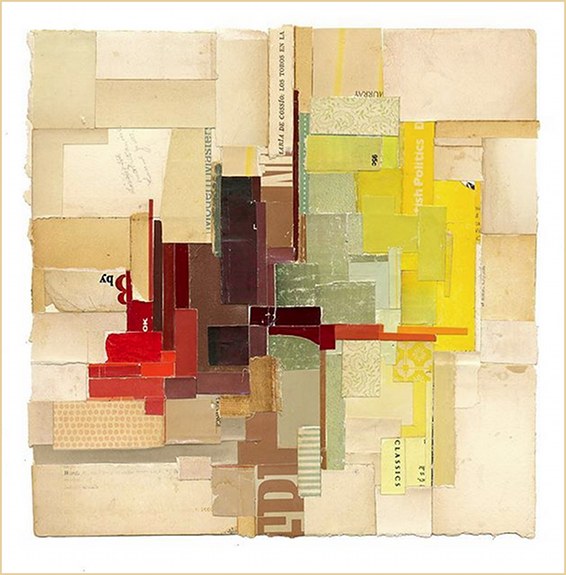
(title unknown)
abstract collage by M Tidwell
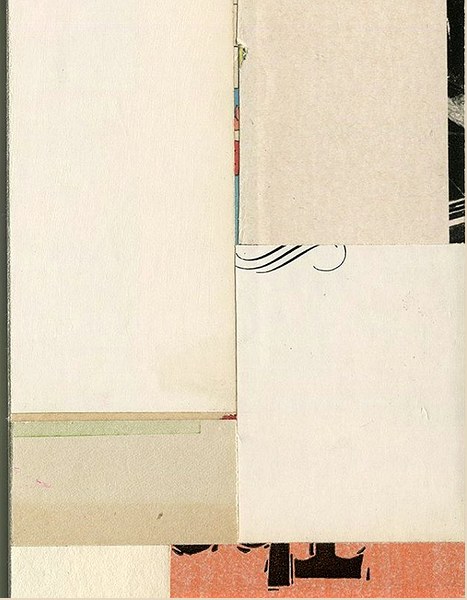
11zc18
abstract collage by Z Collins
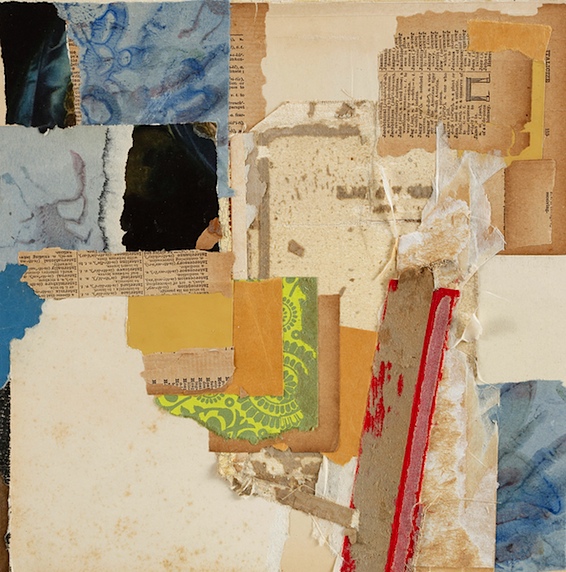
Elysburg IV
abstract collage by C Chapman
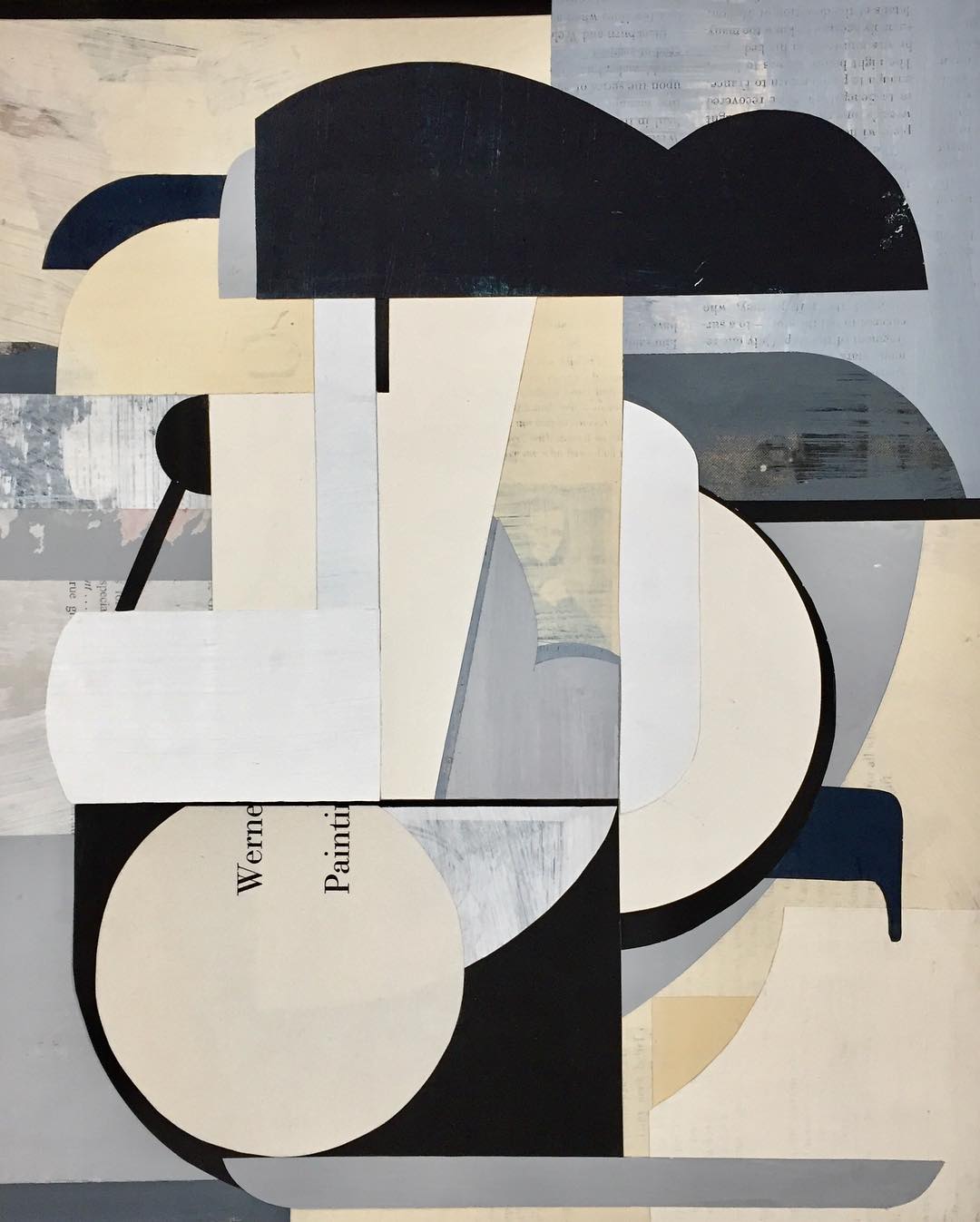
Ellington
abstract collage by D McKenna
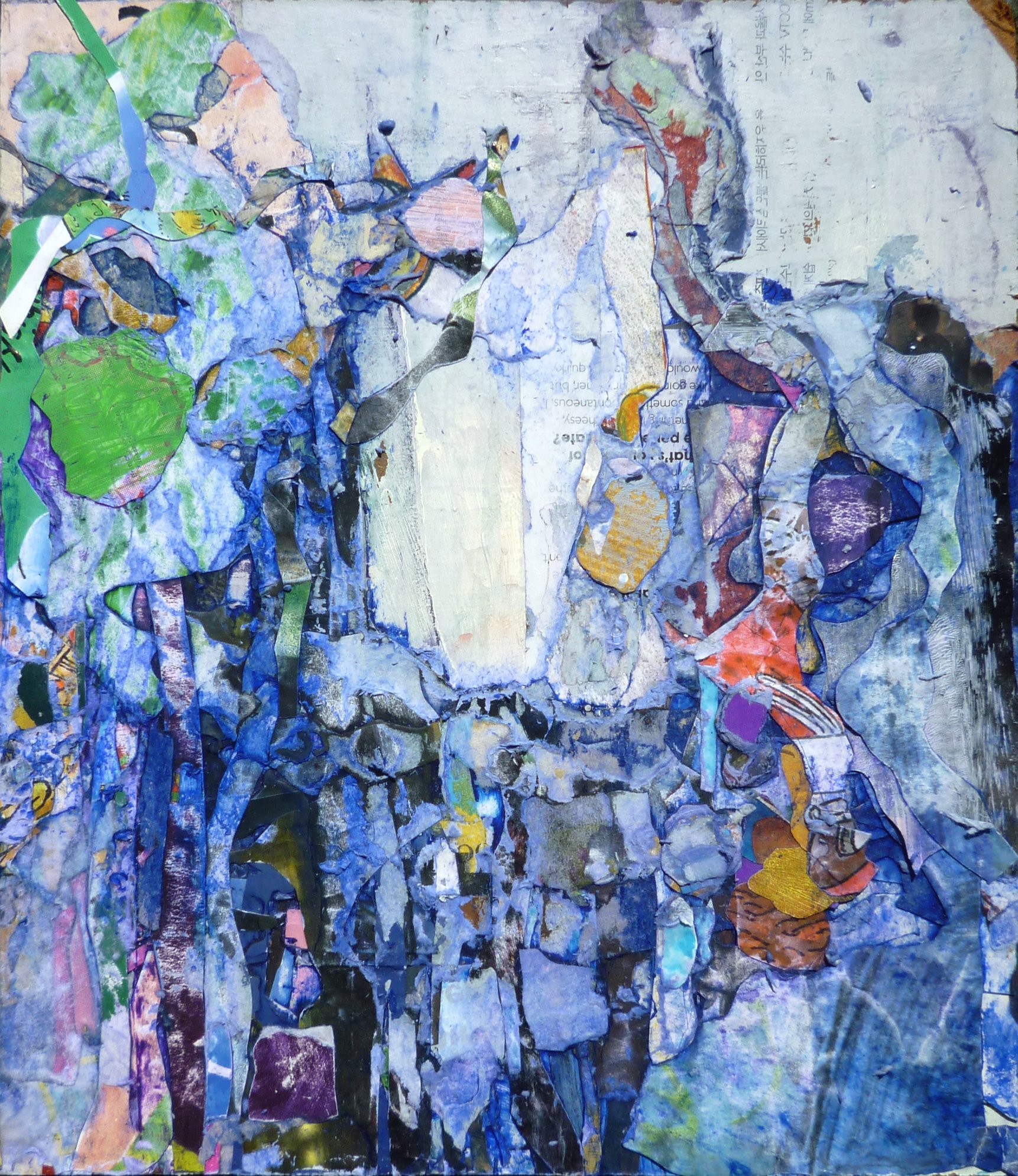
Osmosis 3
abstract collage by C Emeleus
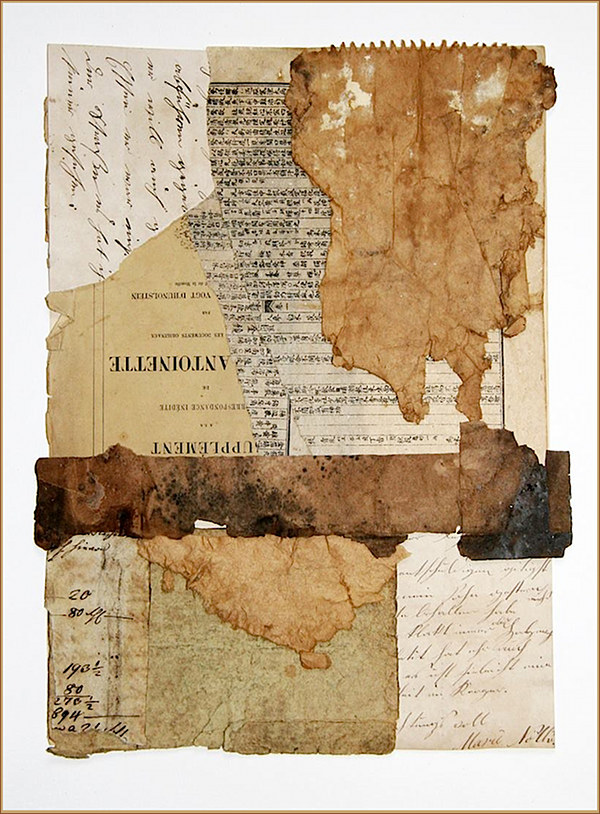
Antoinette
abstract collage by W Strempler
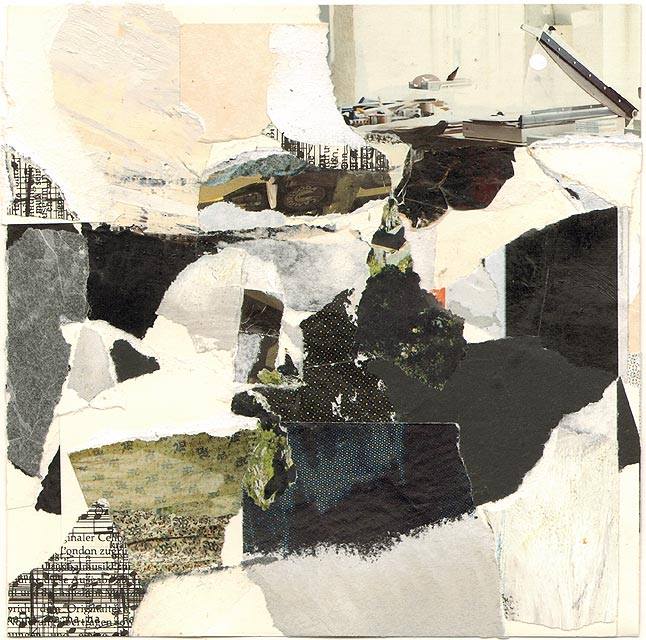
Music
abstract collage by S Kraft
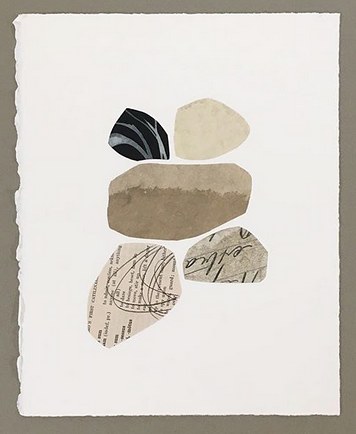
from her series, BALANCE
abstract collage by S A Herman
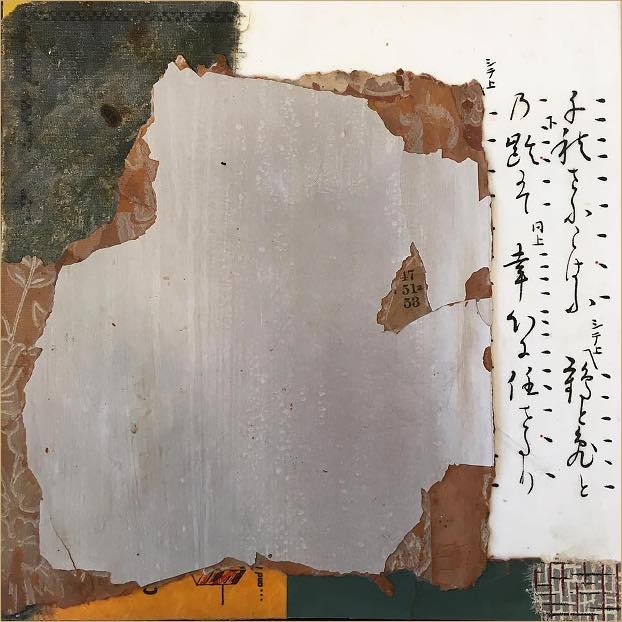
Day 18 of 40
abstract collage by C Neubauer
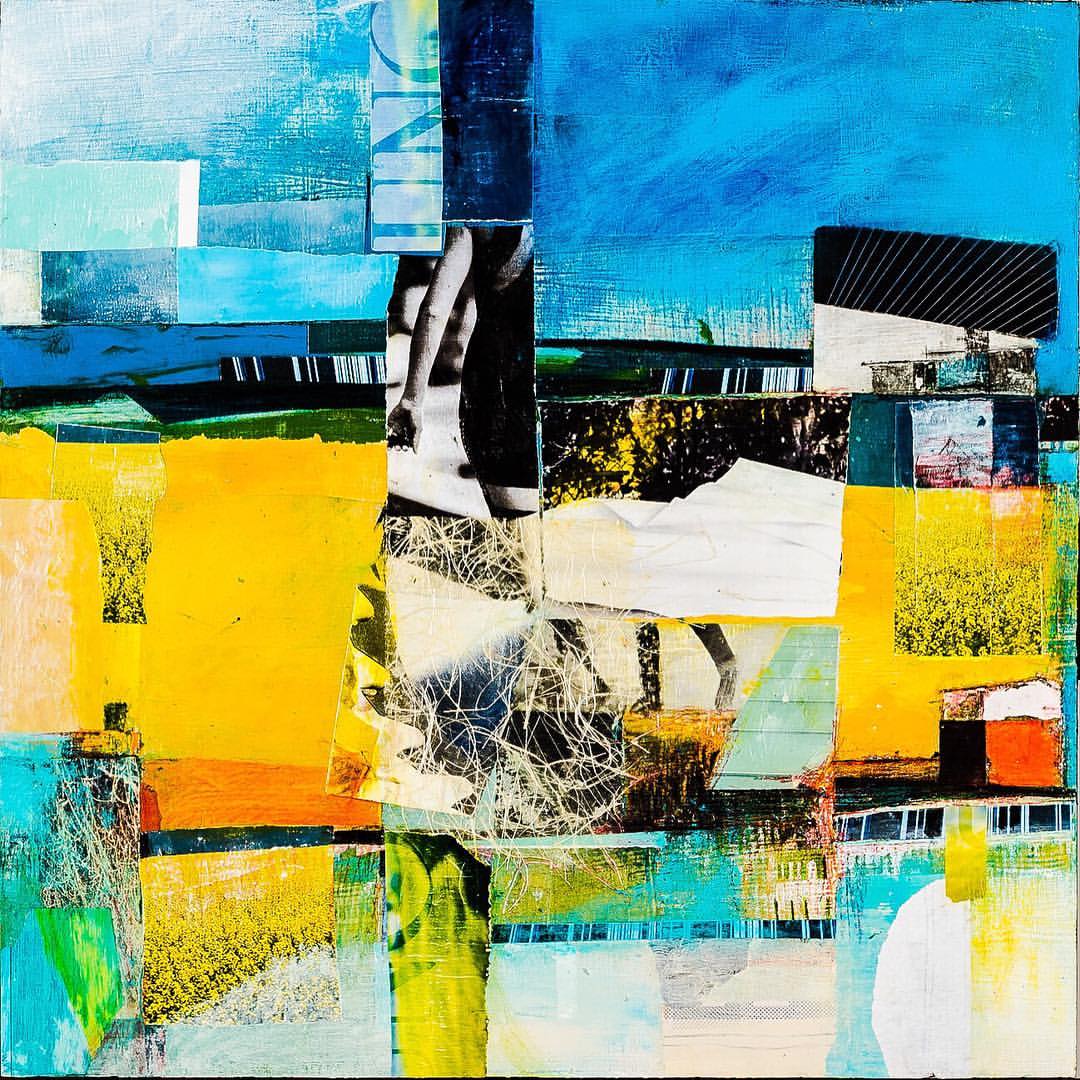
Red Cottage — from her series, SENSE OF PLACE
abstract collage by P A Turner
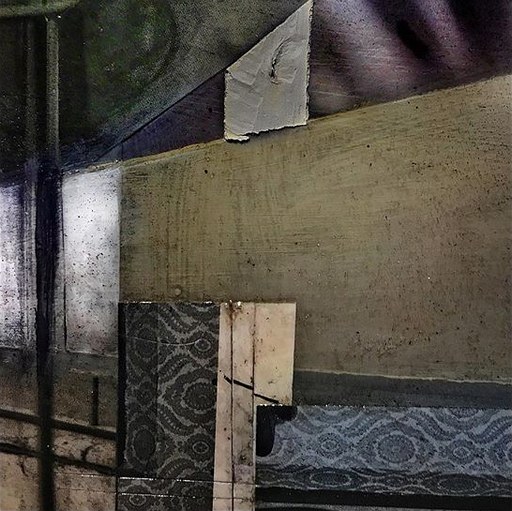
(title unknown)
abstract collage by J C Martin
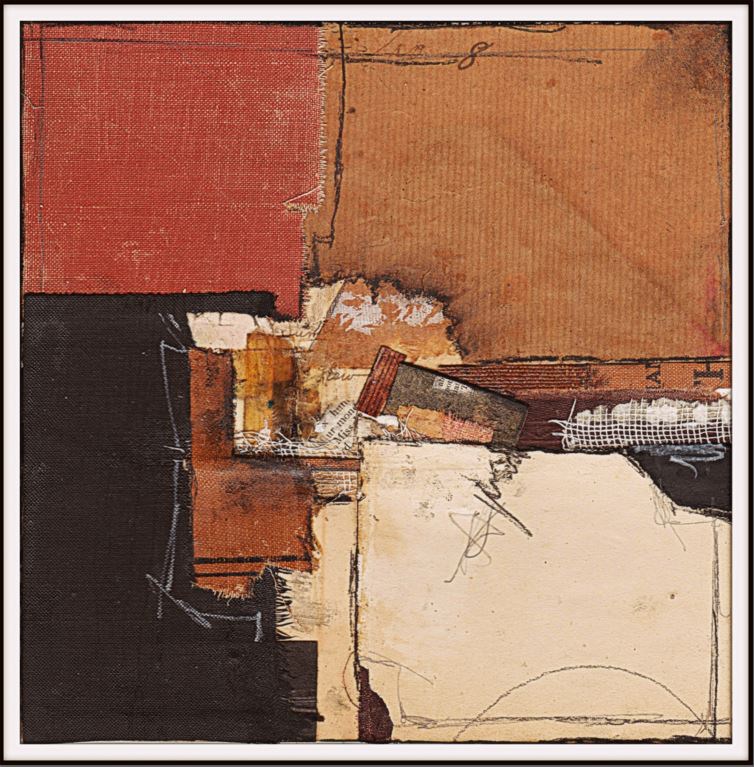
Reap
abstract collage by G Cooper
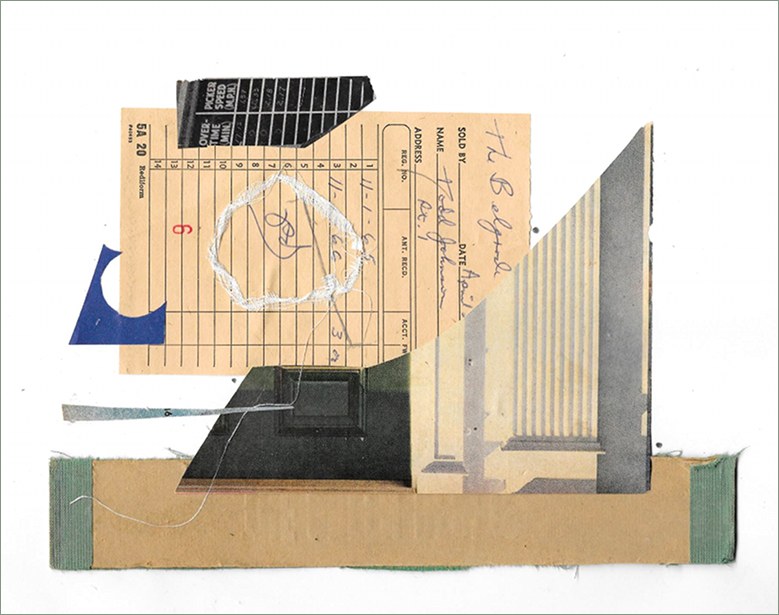
Cognitives and Conclusions
abstract collage by S Ringler
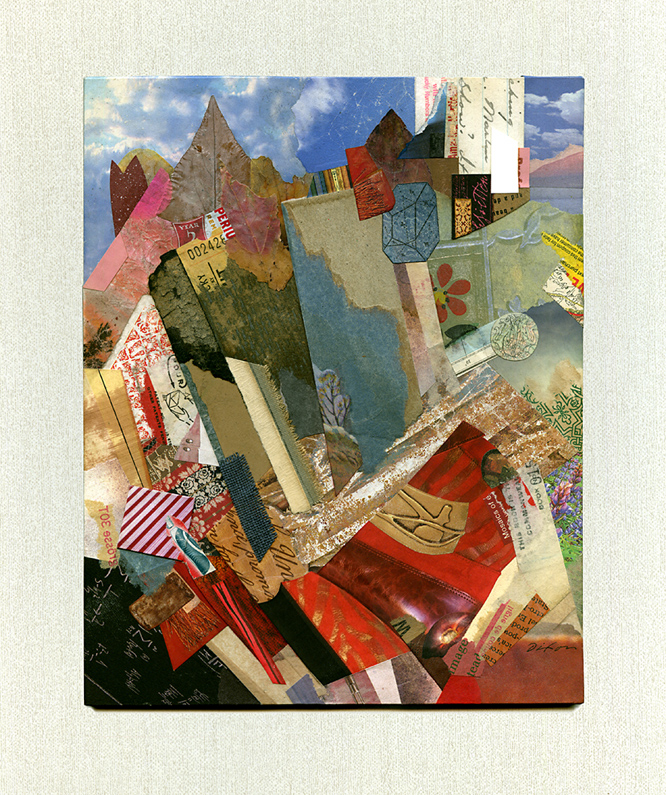
Dynamic Stability
abstract collage by J A Dixon
Purchase this artwork.
Posted in Abstraction, C Chapman, C Emeleus, C Neubauer, Collage, Cubism, D Ellington, D McKenna, Folk Art, G Cooper, Influences, J A Dixon, J C Martin, J Cornell, J Gris, K Schwitters, L Letscher, M Tidwell, Merz, P A Turner, P Picasso, S A Herman, S Kraft, S Ringler, W Strempler, Z Collins | No Comments »
Monday, January 15th, 2018
“When you take risks you learn that there will be times when you succeed and there will be times when you fail, and both are equally important.”
— Ellen DeGeneres
Although it was created in the studio, my new collage landscape titled ‘Wetland’ benefits from a summer of plein-air activity. My “painting with paper” out of doors 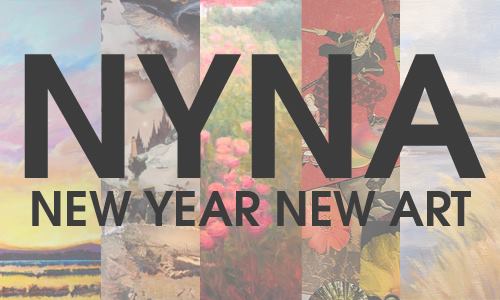 has opened a rewarding area of investigation for my work as a collage artist. I’m pleased to share this piece with the art-viewing community at my first invitational exhibition of the year, the annual New Year New Art show at our Community Arts Center, just a biscuit toss from my home base in downtown Danville, Kentucky. This event has been a fortifying tradition for regional artists, because we can complete our year of work at a risk-taking level, and still know that the result will get a prominent public display.
has opened a rewarding area of investigation for my work as a collage artist. I’m pleased to share this piece with the art-viewing community at my first invitational exhibition of the year, the annual New Year New Art show at our Community Arts Center, just a biscuit toss from my home base in downtown Danville, Kentucky. This event has been a fortifying tradition for regional artists, because we can complete our year of work at a risk-taking level, and still know that the result will get a prominent public display.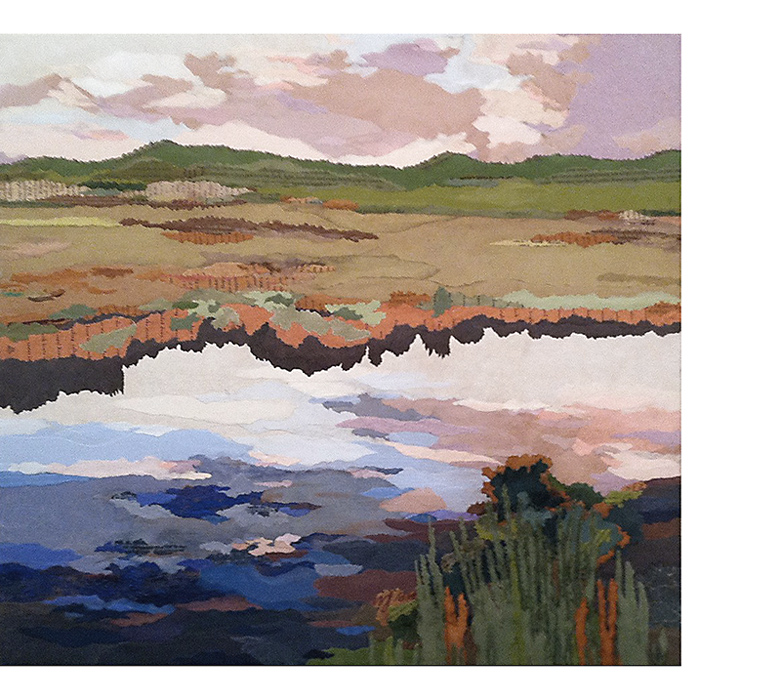 An artist working outside a metropolitan center could not ask for greater support from a local institution.
An artist working outside a metropolitan center could not ask for greater support from a local institution.
Based on an excellent photograph by a longtime pal, this artwork was created as an entry for a contemporary landscape show, but the juror rejected it for unknown reasons. I kept it handy for a pair of upcoming open studio events (my participation in the Central Kentucky ARTTOUR and Gallery Hop Stop). Plenty of praise ensued, but nobody took it home, so I decided to make additional refinements, leading up to the deadline for the January exhibition. A full makeover was unnecessary, as the in-process image above indicates. However, I was not entirely pleased with the vegetation at the waterline, above the dark shadow that spans the composition. In this case, less was not more. Additional ‘foliage’ was needed. I also thought that the lower right corner was too abstract. The desired sense of realism would profit from a more detailed foreground. Late-season ironweed, a favorite of mine, seemed a suitable choice. That led intuitively to a few closing decisions in the sky reflection and distant terrain. 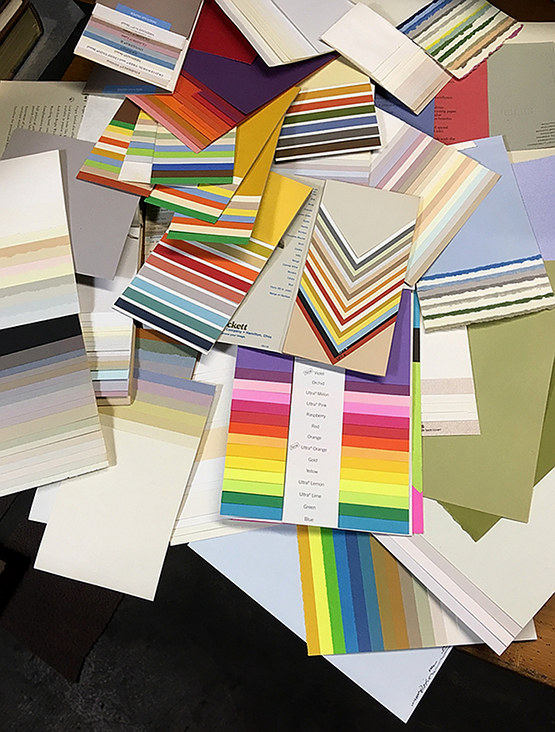 Nearly all of the ingredients were infused with wheat paste and press firmly onto the evolving surface with polymer gel. After thorough drying, selected areas were lightly sanded and the total surface evenly daubed with a flat sealant.
Nearly all of the ingredients were infused with wheat paste and press firmly onto the evolving surface with polymer gel. After thorough drying, selected areas were lightly sanded and the total surface evenly daubed with a flat sealant.
It is very satisfying to work with a palette of elegant papers, and I am fortunate to have them. Some of you may remember (especially those with a background connected in some way to the graphic arts) the pre-internet days of a more diversified paper industry. Numerous mills and distributors slugged it out in a highly competitive market. Inkjet printing was still on the horizon and multi-color offset printing was expensive. Printing on colored stock was a cost-effective way to get more color into published material. Paper producers went out of their way to demonstrate creative ways to use colored paper and many of us who specified paper for printing projects were lavished with promotional samples. Decades later, I still have a stash from that era, and I rely on it now for my plein-air miniatures and studio landscapes. A piece such as ‘Wetland’ puts this hoard to good use; it would not look the same with scrapbook or construction paper. The richness of premium papers manufactured for fine printing were accented with fragments of dulled foil, tissue, scraps of found packaging, and fragments of typography. After all, it’s meant to be a collage artwork!
The opening reception for NYNA is this Friday evening, 5 to 8 pm. Perhaps I shall see you there to discuss ‘Wetland’ in person.
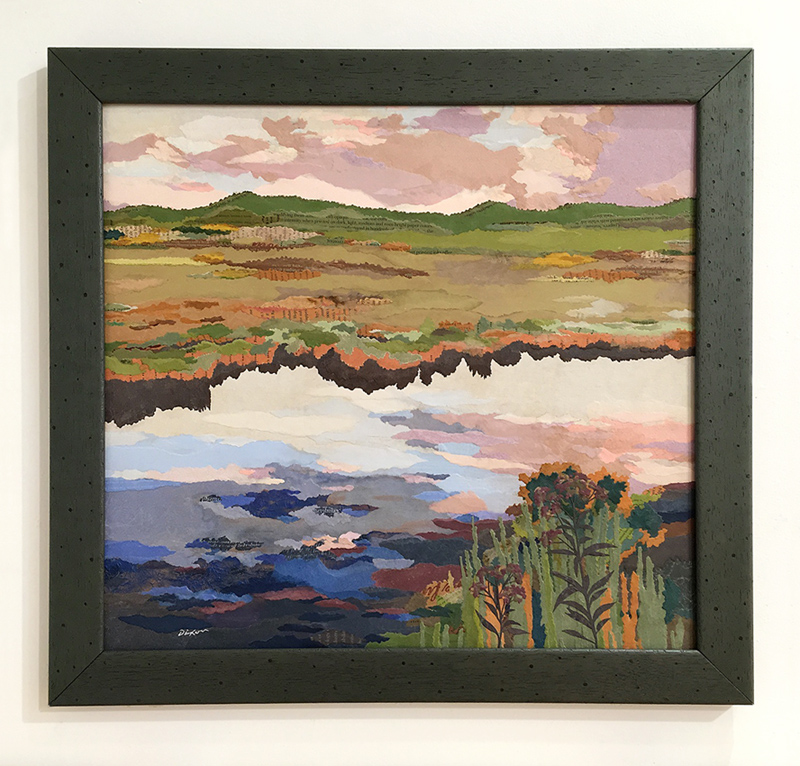
Wetland
collage landscape by J A Dixon
21.25 x 19.25 inches
on structured panel, framed
available for purchase
Posted in Applied Arts, Collage, En Plein Air, Events, Exhibitions, Graphic Design, Ingredients, J A Dixon, Landscape, Larger Works, Methodology, Morgue, New Year New Art, Technique | No Comments »
Saturday, January 13th, 2018
“I have always tried to exploit the photograph. I use it like color, or as the poet uses the word.”
— Hannah Höch
It is always a temptation for a so-called blogger to dangle a “best of” or “top twenty” list to entice a visitor, and, of course, we see this tactic used almost on a daily basis in various fields of art and entertainment. How many of us have gone online and swallowed just such a colorful lure? On the most obvious level, the whole stimulus-response thing is a bit silly, but the potential to learn something new does exist, or to sharpen our own sense of quality, preference, and discernment. Each of us is free to have viewpoints, as long as we recognize them as personal opinions, and avoid casting them about as certitude. Isn’t there enough of that going on these days? (Yes, dear guest, that is merely my perspective.) 
What does this have to do with collage? Well, I just paid a visit to a page at AnotherMag.com (in response to the aforesaid bait), and I learned for the first time about three collage artists who were new to me, a working artist who purports to ruminate on “all things collage.” In this particular case, there may have been an explicit effort to achieve an overdue gender balance for a post intended to spotlight the Höch retrospective at the Whitechapel Gallery in London, but one could question the absence of Paolozzi, Rauschenberg, Johnson, Hamilton, or Kolář. To not include at least one of these men as a key figure in the history of collage brings no meaningful discredit on any of the artists, but only on the list. (And that, too, is just my opinion).
Nevertheless, I am not ashamed to accentuate the gaps in my collage literacy and to feature three noteworthy female artists: Eileen Agar, Nancy Spero, and Annegret Soltau. Examples of their work should have appeared here long before now.

Woman reading
by Eileen Agar, 1936
Museum of New Zealand

Protagonists
by Nancy Spero, 1989
disposition unknown

Grima – mit Katze
by Annegret Soltau, from her 1986-97 series
Vero Group Collection, Houston, Texas
Posted in A Soltau, Assemblage, Collage, Criticism, Dada, E Agar, E Paolozzi, Exhibitions, G Braque, H Höch, Influences, J Cornell, J Kolář, J Stezaker, J Treece, K Schwitters, Links, M Ray, Merz, N Spero, P Donley, R Hausmann, R Johnson, R Rauschenberg, Surrealism | No Comments »
Wednesday, August 9th, 2017
“Try to understand, not only the nature of what you’re looking at, but your own perception and the judgments behind what you’re looking at.”
— Nicolas Uribe
Are you still as interested in this subject as I am, my dear reader? I hope so. Permit me to begin this entry with an update on my evolving ‘Plein Air Collage Kit.’ After two more productive “art-outs,” minor refinements are still taking place. Protective feet were added to the base, a better diversity of colored and printed papers were organized, and, since it isn’t necessary to take much adhesive on location, I downsized the glue bottles for a better fit.
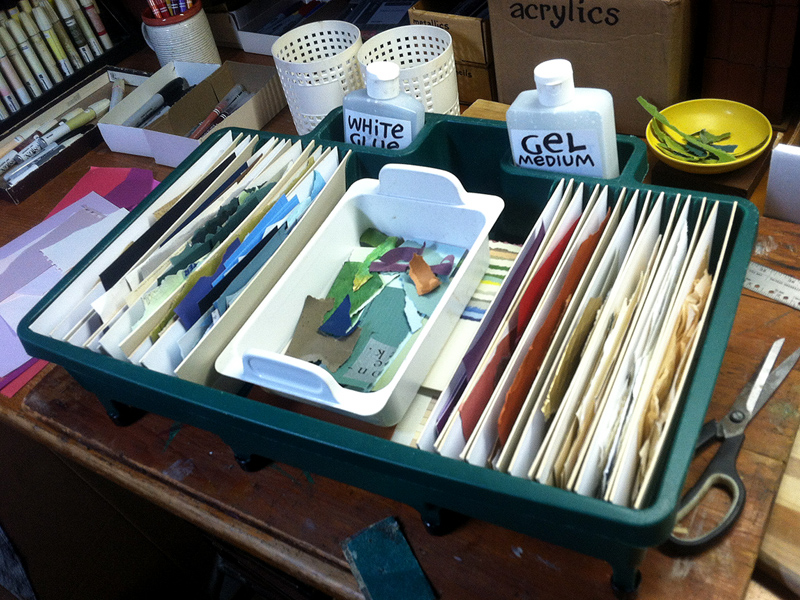
The PAACK group was welcomed to a home with lovely farmscapes in every direction. I picked a breezy spot to test my methodology and to capture one of our host’s flower gardens. I liked the sloping road and cornfield in the background and a central tree at its summer peak. 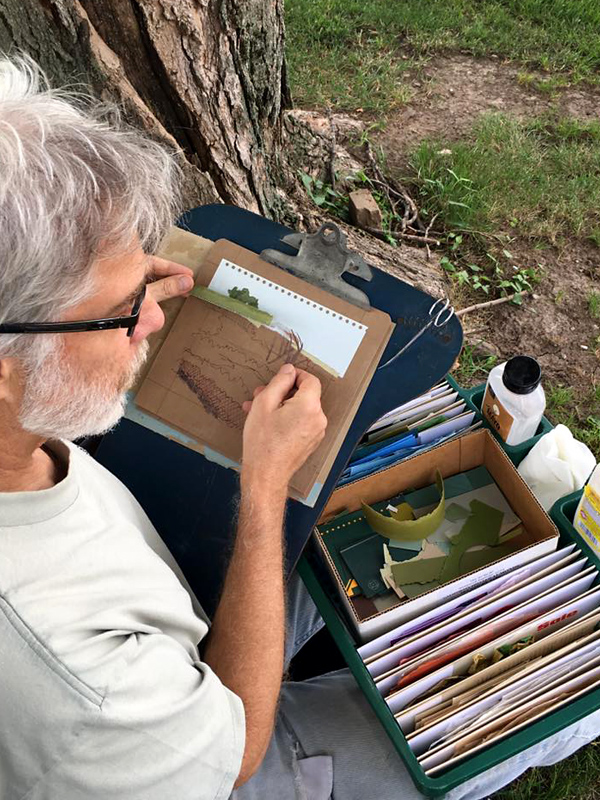 The composition was complex enough that I would push the limit of the 50/50 ratio of location-to-studio labor before it was finished. I wanted to do justice to the impatiens in the foreground. Although I intend to get back to some strictly on-site studies, I decided to create a companion piece with the same ratio on my next venture into the countryside.
The composition was complex enough that I would push the limit of the 50/50 ratio of location-to-studio labor before it was finished. I wanted to do justice to the impatiens in the foreground. Although I intend to get back to some strictly on-site studies, I decided to create a companion piece with the same ratio on my next venture into the countryside.
In my adopted area of the southern bluegrass region of Kentucky, there are many historic farm estates. Two of my favorites are Isaac Shelby’s Traveler’s Rest, which is partially accessible to the public, and pioneer surgeon Ephraim McDowell’s summer retreat named Cambus-Kenneth Farm, which is not. It was a rare treat for our group to be offered the opportunity to wander among the paddocks and historic structures of the serene Cambus-Kenneth on the last day of July.
It’s not as though I haven’t drawn or painted out of doors many times since youth, but the recent, more systematic approach has introduced me to aspects of the plein air discipline that are no doubt familiar to artists who have made the practice a ritual. Personally, I find that it is important to not spend too much time selecting a spot to sit, 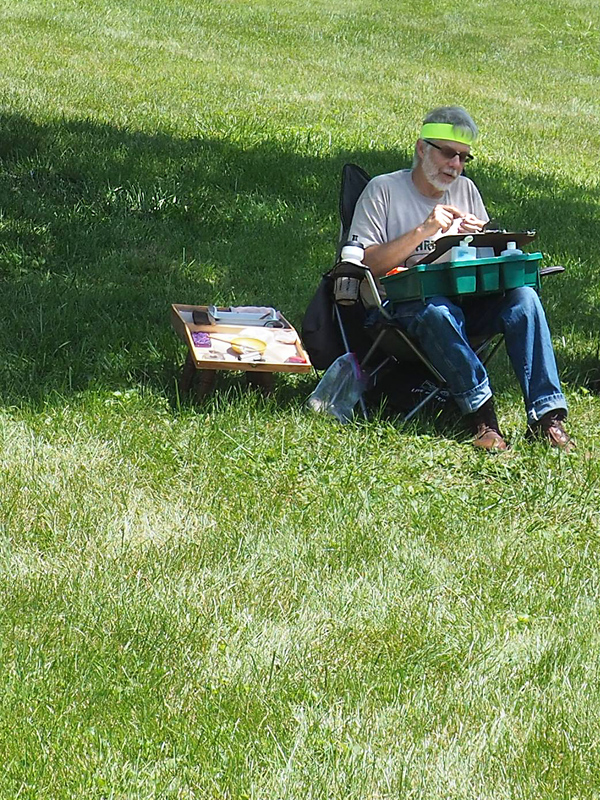 even though the entire enterprise rests upon the decision. It seems as though the act should be part of the overall intuitive process to which the day is pledged. It was tough to avoid squandering valuable minutes at Cambus-Kenneth, since there were barns, ponds, pastures, an impressive Italianate home, and many remarkably preserved 18th- and 19th-century brick outbuildings, including an icehouse, springhouse, and slave quarters. By using a viewing card with square “window,” I zeroed in on the old red-roofed quarters. I was able to complete enough of the design that day to stay within the 50/50 restriction when I finished the artwork in the studio a few days later. Folks, I may just be getting the hang of this gig. Please let me know what you think of the results.
even though the entire enterprise rests upon the decision. It seems as though the act should be part of the overall intuitive process to which the day is pledged. It was tough to avoid squandering valuable minutes at Cambus-Kenneth, since there were barns, ponds, pastures, an impressive Italianate home, and many remarkably preserved 18th- and 19th-century brick outbuildings, including an icehouse, springhouse, and slave quarters. By using a viewing card with square “window,” I zeroed in on the old red-roofed quarters. I was able to complete enough of the design that day to stay within the 50/50 restriction when I finished the artwork in the studio a few days later. Folks, I may just be getting the hang of this gig. Please let me know what you think of the results.
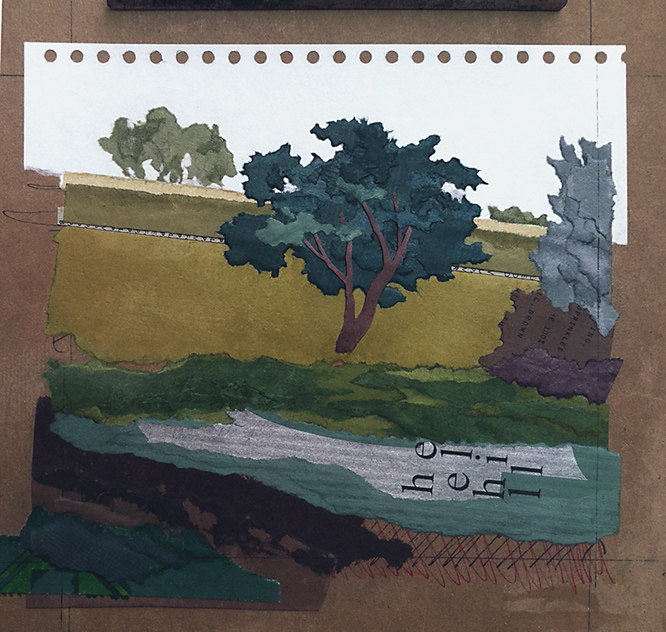
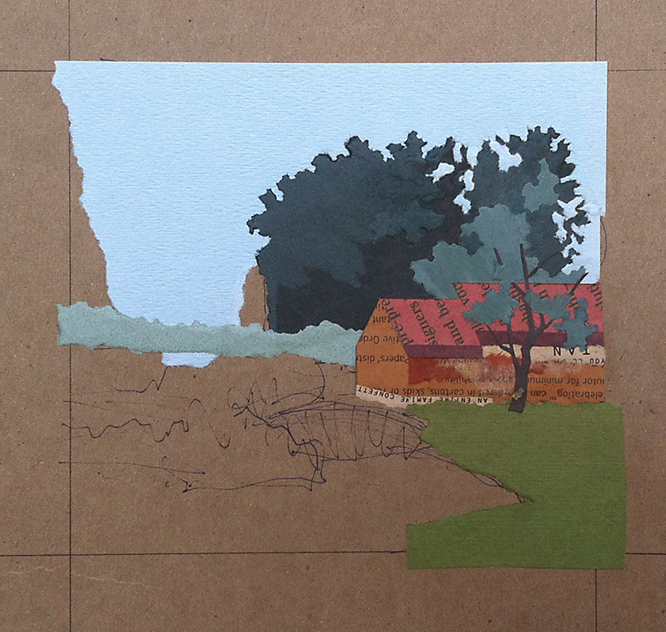
Here are the intermediate stages of two plein air miniatures, after completing
the on-location work. I start with my finding an appealing composition with a
viewing card, then roughly sketch the layout before picking a color scheme
from papers available in my kit. These artworks required studio time equal
to what I spent in the field — a total of approximately nine to ten hours each.
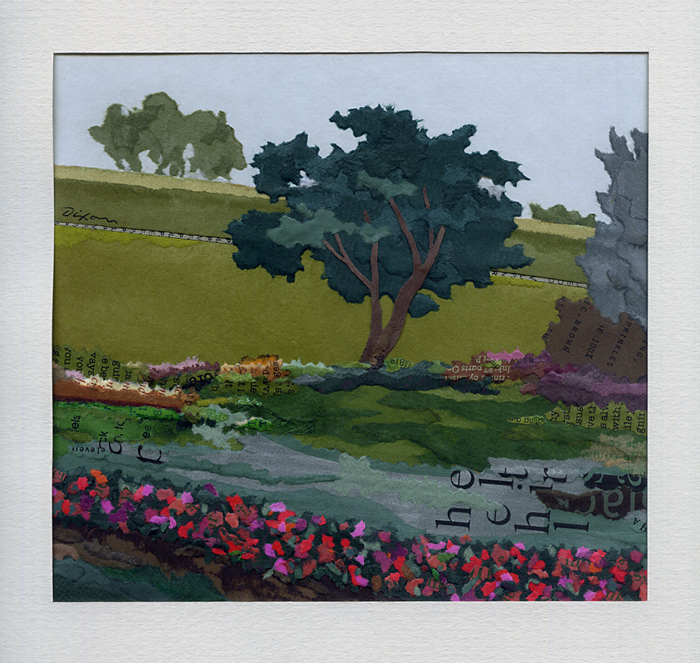
Garden of Alice
plein air collage miniature by J A Dixon
6.625 x 6.125 inches
• S O L D
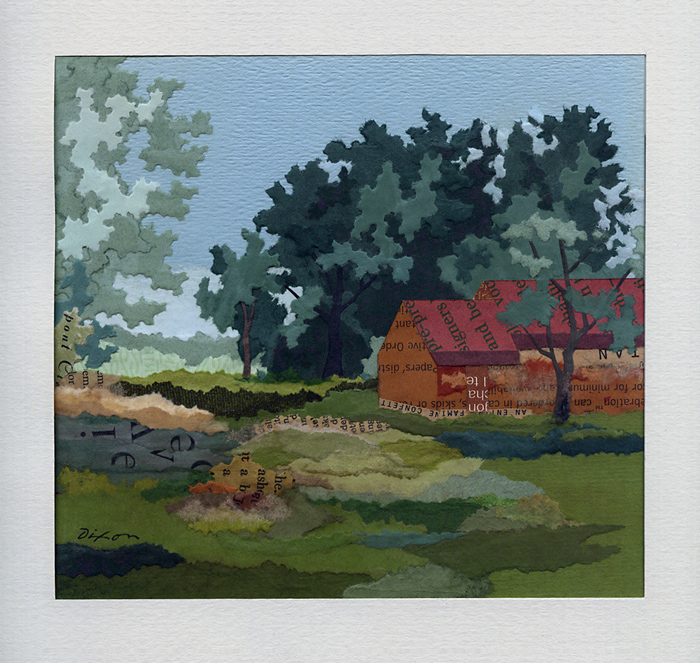
Old Quarters
plein air collage miniature by J A Dixon
6.625 x 6.125 inches
• S O L D
Posted in Collage, En Plein Air, J A Dixon, Landscape, Methodology | 2 Comments »
Saturday, August 5th, 2017
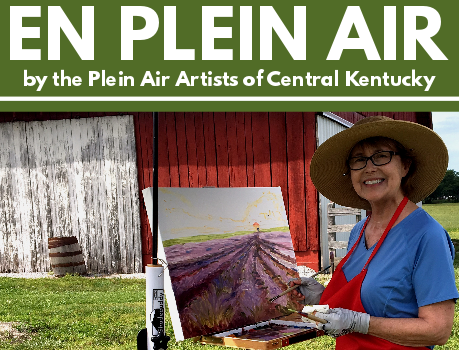
My sincere appreciation to the PAACK for permitting this rookie to display two of my plein air collage miniatures at the August show. Last night’s gathering at our Community Arts Center was a joy, and I heard that a local record was broken for opening-reception sales.
My appreciation to Kate Snyder for some nice local publicity.
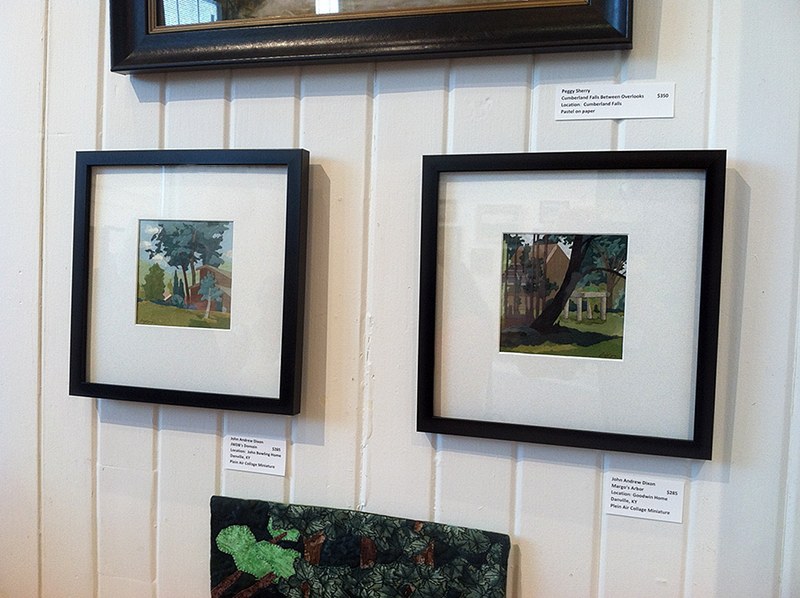
Posted in En Plein Air, Exhibitions, Landscape | No Comments »
Wednesday, July 19th, 2017
“Detached from judgement, hesitation, fear of failure or imitation, one embraces the moment and the place, as revealed in value, color, and shape — the impossible can happen and the spirit of the place appears as if by magic.”
—Dean Taylor Drewyer
I joined the Plein Air Artists of Central Kentucky on one of their regular “art-outs” with a totally different system than I used in my first venture. Louis Degni is marketing an outdoor kit for collage artists that he calls the “St Hilaire System” (named for artist Elizabeth St Hilaire). 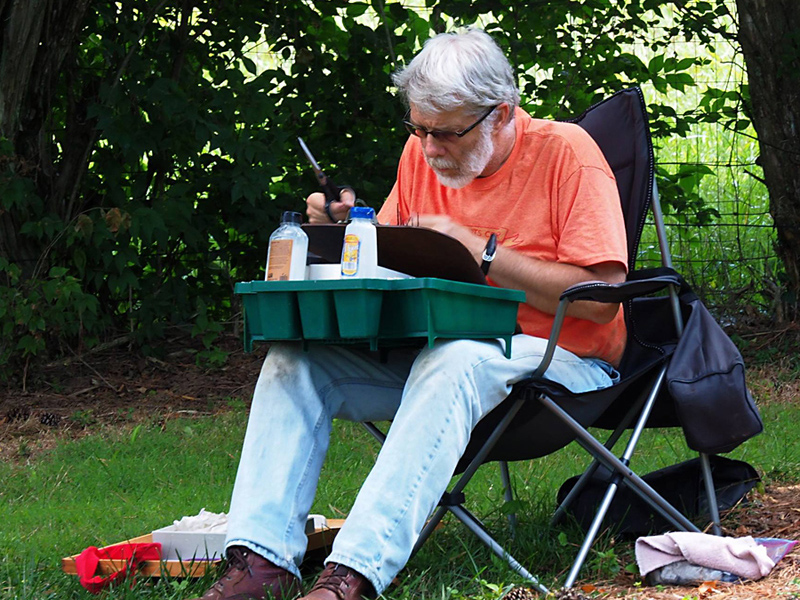 His design may work fine, but the idea of using cups to control available source paper did not appeal to me, so I put together a different configuration based on a re-purposed plastic dish drainer. Using custom-cut folders fitted to the 14 dish slots, I have an array of potential ingredients that are fully protected from the wind. Needless to say, even a mild breeze can play the devil with small scraps of paper. After I got to the site and picked my location, I sorted through a spectrum of colors to choose a palette.
His design may work fine, but the idea of using cups to control available source paper did not appeal to me, so I put together a different configuration based on a re-purposed plastic dish drainer. Using custom-cut folders fitted to the 14 dish slots, I have an array of potential ingredients that are fully protected from the wind. Needless to say, even a mild breeze can play the devil with small scraps of paper. After I got to the site and picked my location, I sorted through a spectrum of colors to choose a palette. 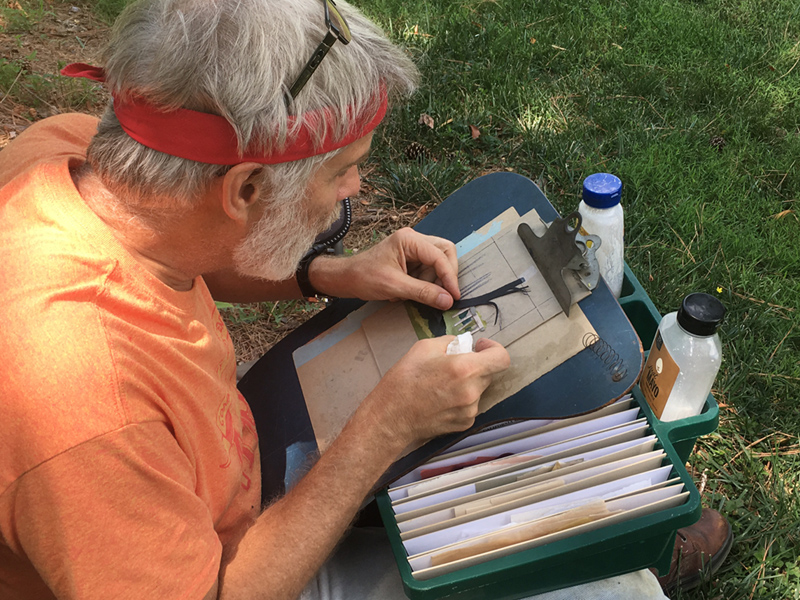 A central compartment between the little folders provides storage for this selected material under the large clipboard that secures my working surface. Bottles with two different adhesives fit handily into what was originally meant to hold kitchen flatware. The scale is ideal for a collage miniature. Additional refinements are anticipated, especially if I decide to increase the working dimensions, but I now have a solid approach that allows me to concentrate on capturing the essence of the scene.
A central compartment between the little folders provides storage for this selected material under the large clipboard that secures my working surface. Bottles with two different adhesives fit handily into what was originally meant to hold kitchen flatware. The scale is ideal for a collage miniature. Additional refinements are anticipated, especially if I decide to increase the working dimensions, but I now have a solid approach that allows me to concentrate on capturing the essence of the scene.
The hospitality extended by our hosts for the day was remarkable. I was free to roam the property and found a grape arbor that had seen better days, but still looked handsome in a patch of sunlight. My subject may have been too complex for the time slot, or, more likely, the process remains slow, since my layering method is still inefficient. I wasn’t able to complete all the foliage on site, so I had to spend some studio time the following day to finish up. I’ll admit to being pleased with the results, although I hadn’t expected to be satisfied with my early attempts. I have no idea where this is heading, but I’m happy to follow my enthusiasm to the next phase!
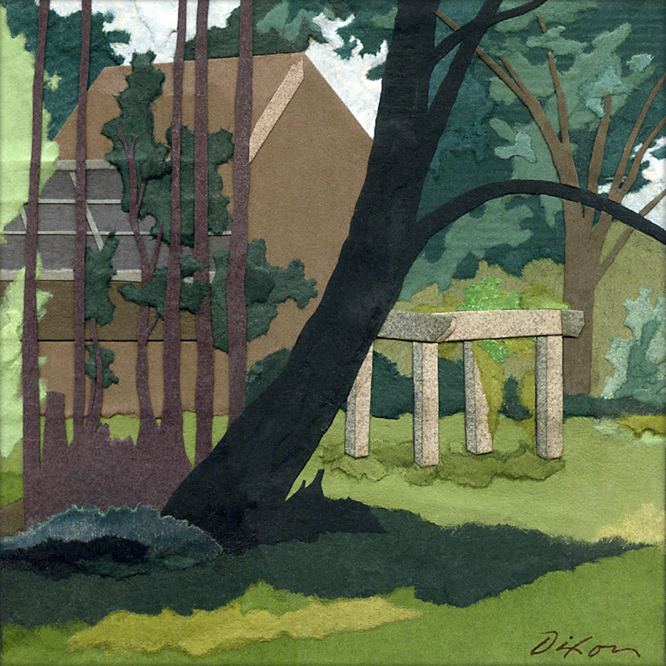
Margo’s Arbor
plein air collage miniature by J A Dixon
4.625 x 4.625 inches
available for purchase
Posted in 1) Available!, Collage, En Plein Air, Ingredients, J A Dixon, Landscape, Methodology, Technique | No Comments »
Wednesday, June 28th, 2017
“When painting and sketching plein air I sink into the landscape, an attuned witness to its mood and beauty.”
—Dianne Bersea
After the experience I had last September in Sault Ste Marie, I stayed attached to the particular idea that I could perfect a method of doing collage en plein air. I had no illusions about becoming a Tom Thomson or Rockwell Kent. I was just waiting for an opportunity to put my notion to the test, and I found it when the Plein Air Artists of Central Kentucky invited me to one of their summer outings.
I assumed going into the experiment that, aside from the creative challenge that faces any person working out of doors, a collage artist would need to be prepared to accommodate even the slightest of breezes. I had no coherent system for doing that and placed more of my focus on how to transport what I thought I would need on location. Fortunately, the scheduled gathering was on a day of gentle weather, so I was able to measure the potential hazard under ideal conditions. Truth be told, I still spent some time on hands and knees, searching for wayward scraps in the surrounding grass. Ideas for a more systematic approach took shape as I worked, and I also learned what would not be needed the next time out (perhaps equally important as identifying what was essential). Forgetting common white glue was a blunder, so I fell back on a desirable combination of wheat paste and gel medium. I rarely use a single adhesive anyway.
The process was more like painting with paper than what I have been used to — studio collage is more concerned with the ingredients themselves, but this was about interpreting what was visually in front of me. I was reminded of the small, square studies that an accomplished plein air painter showed me when I visited her studio in Berkeley, California. To develop the capacity to genuinely SEE what is before me is an exciting prospect (admittedly long overdue). As I move from everything being new and unfamiliar to a clearer sense of the potential for this activity, I can eventually pursue the inherent spontaneity and unexpected juxtapositions of true collage, rather than the effect of a simple, torn-paper rendering. Nevertheless, my initial emphasis must be on devising a more workable, mobile kit that guards against the qualities of wind, of which there is no degree so minimal as to not be undesirable when handling small paper ingredients. It is no surprise to me that relatively few collage artists are creating works entirely outside.
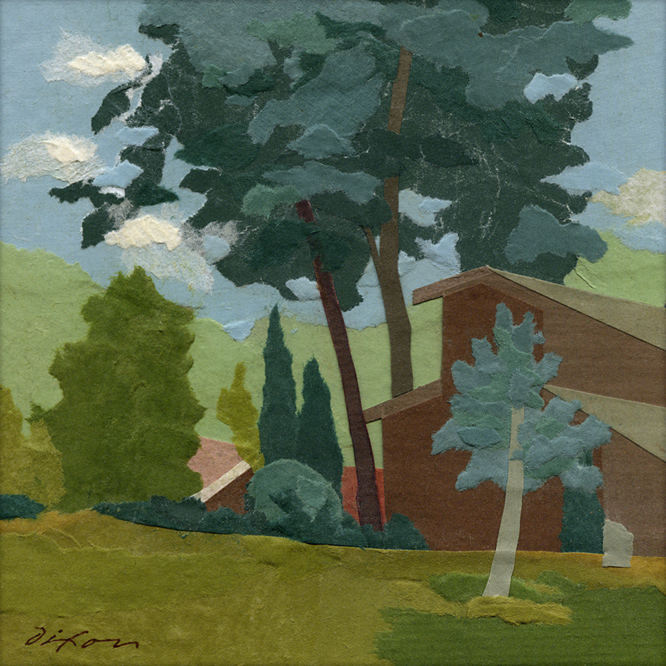
JWDB’s Domain
first plein air collage miniature by J A Dixon
4.625 x 4.625 inches
• S O L D
Posted in Collage, En Plein Air, Ingredients, J A Dixon, Landscape, Methodology, R Kent, T Thomson | No Comments »
Sunday, May 7th, 2017
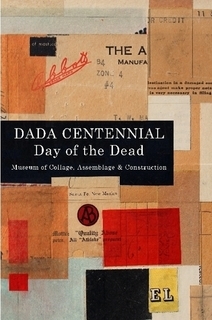 It is with high anticipation that I await my first look at the new publication which documents the Dada Centennial exhibition organized by the Ontological Museum. My sincere thanks to Cecil Touchon for including the essay that I wrote last year — On Kurt Schwitters and a Century of Dada — but, most of all, for volunteering so much of his time to this historic observation and to the ongoing administration of the institution he founded, now located in Santa Fe, New Mexico.
It is with high anticipation that I await my first look at the new publication which documents the Dada Centennial exhibition organized by the Ontological Museum. My sincere thanks to Cecil Touchon for including the essay that I wrote last year — On Kurt Schwitters and a Century of Dada — but, most of all, for volunteering so much of his time to this historic observation and to the ongoing administration of the institution he founded, now located in Santa Fe, New Mexico.
The exhibition at the archives of the International Museum of Collage, Assemblage and Construction opened on November 4, 2016 and lasted through January 31, 2017. A worldwide array of Dada-inspired artists sent artworks for the show that will be added to the permanent collection. They are all displayed in the full-color, 275-page catalog that is available for purchase. A “Merz Painting” by Peter Dowker is featured on the cover. In addition to my essay, the publication has an introduction by Touchon, another essay by Drager Meurtant, Birth of Merz by Schwitters, original verse by Dada artists, writings by Hugo Ball, three of my experimental miniatures, and collage art by some whose work I have spotlighted here at TCM, including Dowker, Hope Kroll, Zach Collins, Nikki Soppelsa, Erin Case, Joel Lambeth, Melinda Tidwell, Evan Clayton Horback, and Katrien De Blauwer.
When I experienced the milestone Schwitters exhibition at the Berkeley Museum of Art in 2011, I failed to bring home the forty-dollar catalog. When I got back to Kentucky, I discovered that the compendium was already worth $200. I do not know what long-term plan the Ontological Museum has for this publication, but it may not always be available. Go online, take advantage of the current discount, and buy it now.
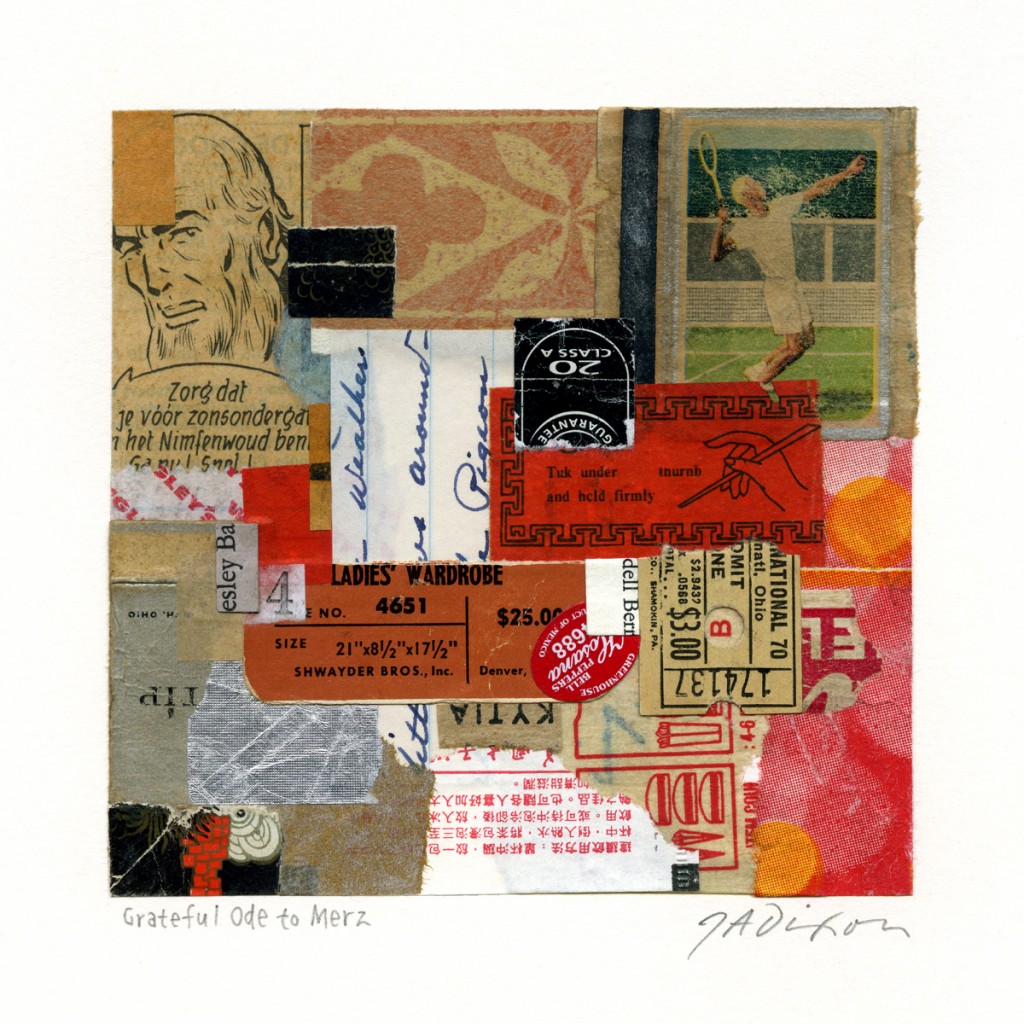
Grateful Ode to Merz
collage miniature on Bristol by J A Dixon
homage to Kurt Schwitters
collection of The Ontological Museum
Posted in C Touchon, Collage, Dada, E C Horback, E Case, Exhibitions, H Kroll, J A Dixon, J Lambeth, K De Blauwer, K Schwitters, M Tidwell, Merz, Museums, N Soppelsa, P Dowker, Publications, Z Collins | No Comments »
Sunday, March 5th, 2017
“If you’re coasting, you’re going downhill.”
— L W Pierson
Awhile ago, someone asked a question about the trajectory of collage: “What’s Next?” To ponder that, I remind myself that one thoughtful critique is worth more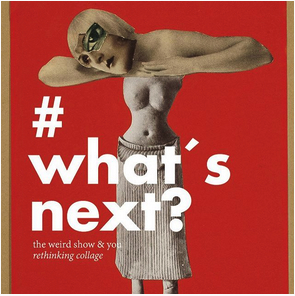 than a ton of casual “likes.” Those of us who love this practice need to push beyond the comfort of mutual praise and communicate honestly about the medium of collage (not about our political attitudes). Don’t expect the lords of social media to provide a thumbs-down button. That’s not the solution (even if they do). There needs to be the virtual equivalent of the intense coffee houses and night spots of a century ago, where artists were not shy about challenging the easy answers and safe solutions.
than a ton of casual “likes.” Those of us who love this practice need to push beyond the comfort of mutual praise and communicate honestly about the medium of collage (not about our political attitudes). Don’t expect the lords of social media to provide a thumbs-down button. That’s not the solution (even if they do). There needs to be the virtual equivalent of the intense coffee houses and night spots of a century ago, where artists were not shy about challenging the easy answers and safe solutions.
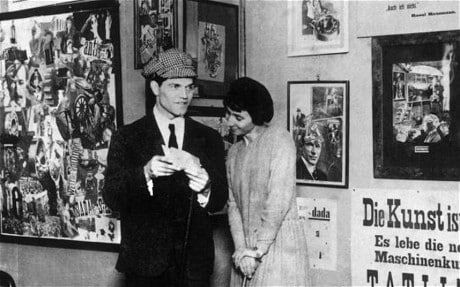 Höch, Hausmann, Schwitters, and their fellow collage “inventors” included found material contemporary with their times. There are many current practitioners who restrict themselves to “vintage” resources, and some of them avoid using anything younger than 50 years old. Whatever they choose to do is fine, but, in my opinion, 21st-century collage artists are challenged to explore the cast-off stuff of today for potential ingredients in a fresh “school of post-centennial collage” that “documents” our own culture, rather than confine themselves to curating the artifacts of our ancestors. Remember, when KS pasted down a tram ticket in place of a brushstroke, nearly a hundred years ago, he was clearly using something that he just acquired on the street. Let’s think about that when as ask ourselves, “What’s Next?”
Höch, Hausmann, Schwitters, and their fellow collage “inventors” included found material contemporary with their times. There are many current practitioners who restrict themselves to “vintage” resources, and some of them avoid using anything younger than 50 years old. Whatever they choose to do is fine, but, in my opinion, 21st-century collage artists are challenged to explore the cast-off stuff of today for potential ingredients in a fresh “school of post-centennial collage” that “documents” our own culture, rather than confine themselves to curating the artifacts of our ancestors. Remember, when KS pasted down a tram ticket in place of a brushstroke, nearly a hundred years ago, he was clearly using something that he just acquired on the street. Let’s think about that when as ask ourselves, “What’s Next?”
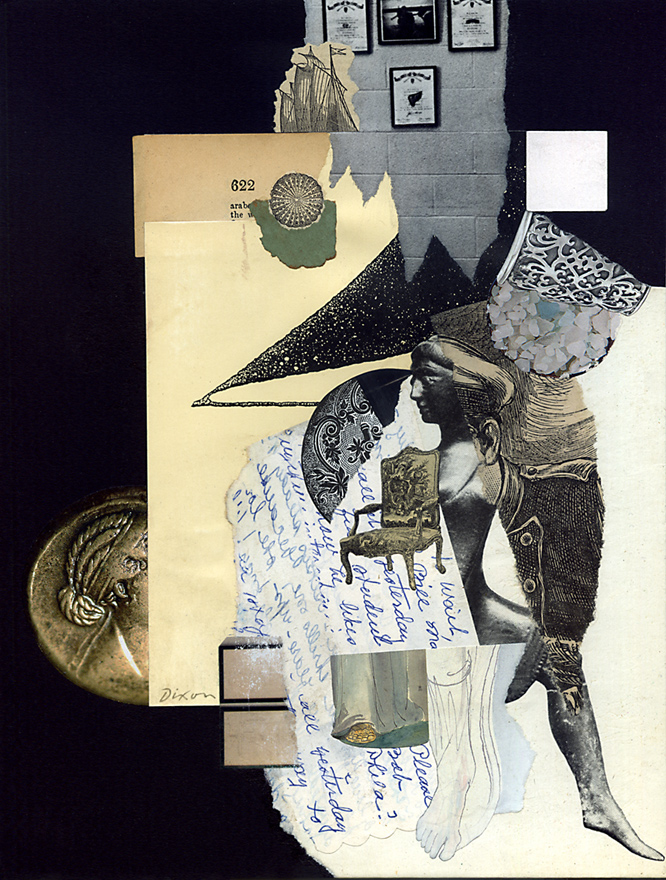
Tinged By Whispered Accounts
collage experiment in monochrome by J A Dixon
7.75 x 10.25 inches
Purchase this artwork.
Posted in Collage, Criticism, Dada, Experiments, H Höch, Ingredients, J A Dixon, K Schwitters, Merz, R Hausmann | No Comments »
Sunday, February 26th, 2017
“And the hits just keep on coming!”
— Bill Drake
Forgive my indulgence as I direct our attention once again to a favorite category of collage artwork. Followers of our medium at Instagram’s deep, mind-bending repository of visual imagery will confirm my declaration that The Surreal Face is 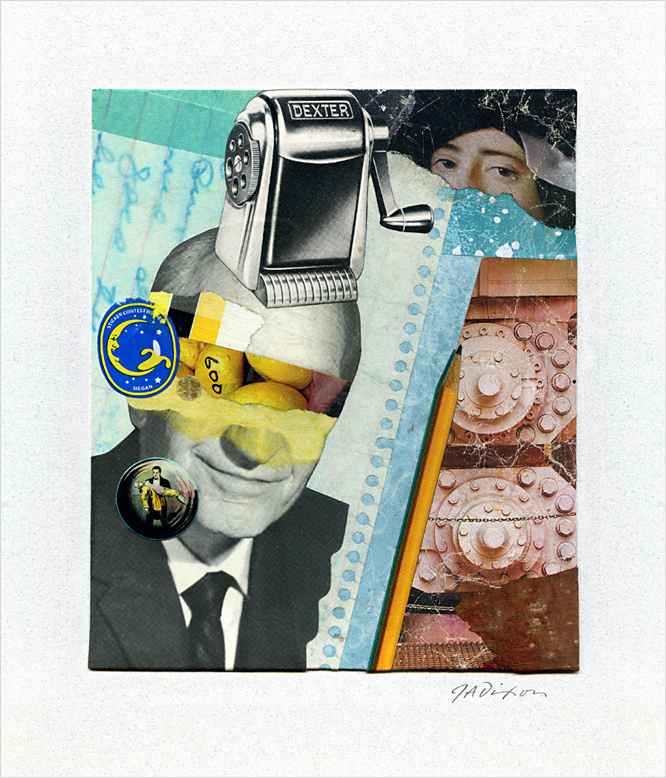 thriving in contemporary collage. I’m not the only person who likes to showcase fine solutions by others (which includes the anonymous sponsor of a page called Strange is Better). Call it a sub-genre or simply classify it under ‘21st-century Surrealism,’ it is a phenomenon that shows no symptoms of decline. Perhaps it goes without saying that something so accessible to entry-level collage artists is also an approach that is difficult to master. Julia Lillard’s devotion to the perennial subject demands that I single her out for a future review. Below are are a few examples that have recently caught my eye, and the links will provide a more extensive look at their bodies of work.
thriving in contemporary collage. I’m not the only person who likes to showcase fine solutions by others (which includes the anonymous sponsor of a page called Strange is Better). Call it a sub-genre or simply classify it under ‘21st-century Surrealism,’ it is a phenomenon that shows no symptoms of decline. Perhaps it goes without saying that something so accessible to entry-level collage artists is also an approach that is difficult to master. Julia Lillard’s devotion to the perennial subject demands that I single her out for a future review. Below are are a few examples that have recently caught my eye, and the links will provide a more extensive look at their bodies of work.

Kévin Ingrez
This so-called amateur collagist mines a rich vein of potential when it comes to the enduring genre of collage we continue to highlight.
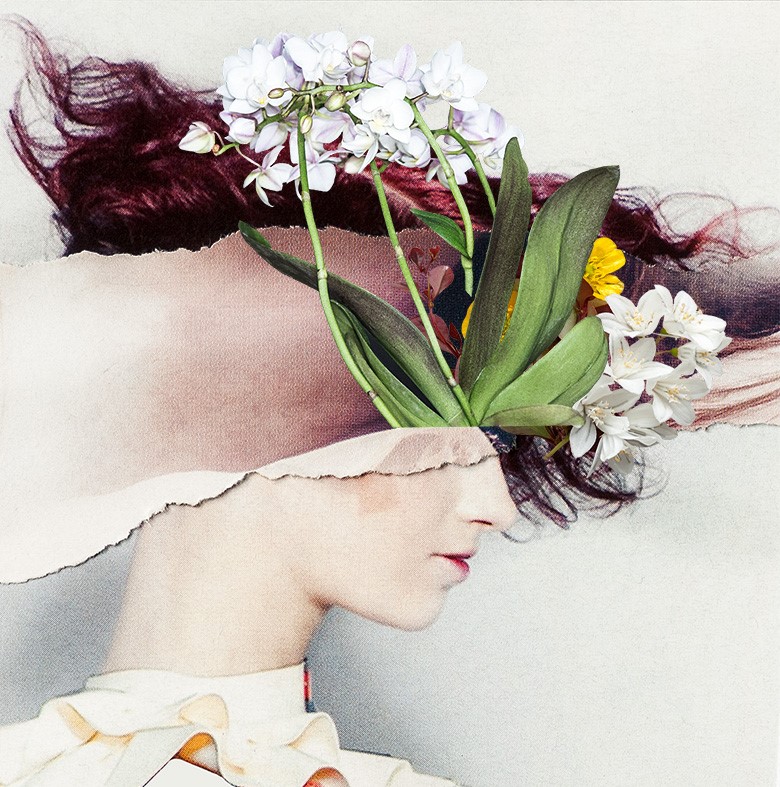
Maja Egli
Her seamless blend of digital and handcrafted collage exemplify the vitality of ‘the Surreal Face’ theme.

Jaroslav Škojec
Although collage artwork by the Czech artist has not received wide exposure, his provocative images are shared regularly with Facebook users.
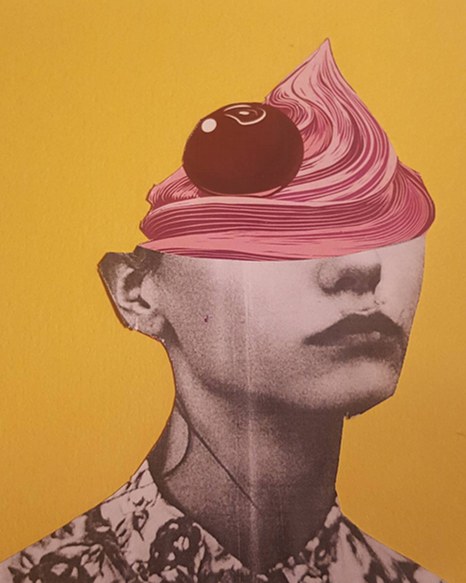
El Salto de Mendieta
A most intriguing artist, but I must admit that I cannot tell if this is an actual name or a pseudonym.
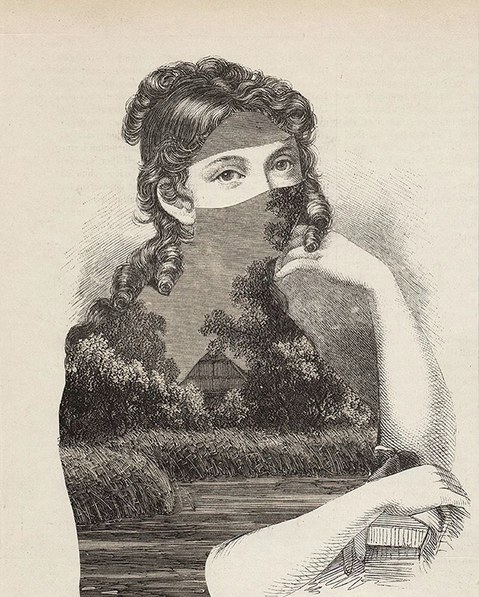
Øje Rum
The Danish artist’s long-running Silent Figure series is dedicated to the undeniable mystery of ‘the Surreal Face.’
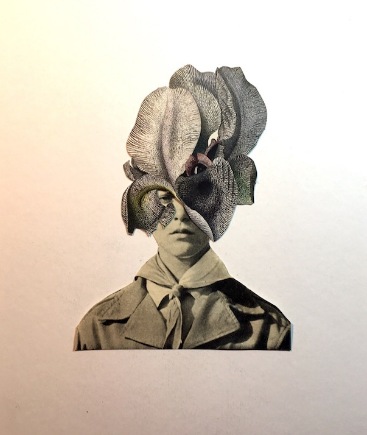
Olivia Descampe
Juxtapositions by the Berlin-based artist are consistently bold, yet delicate, with no grim shadow to her surrealist approach.
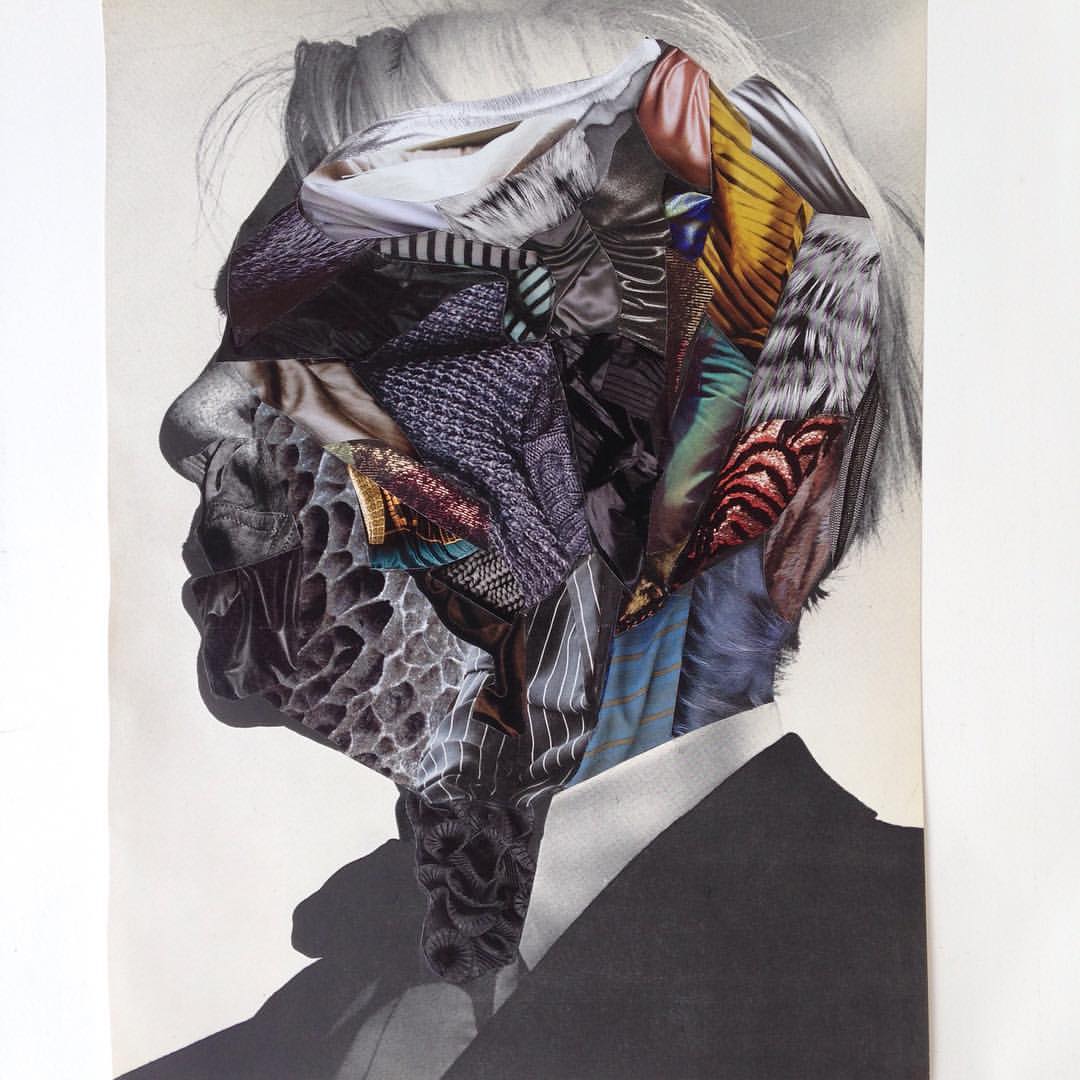
Charles Wilkin
Wilkin’s distinctively undulating approach to surrealism is highly recognizable and always elegant.
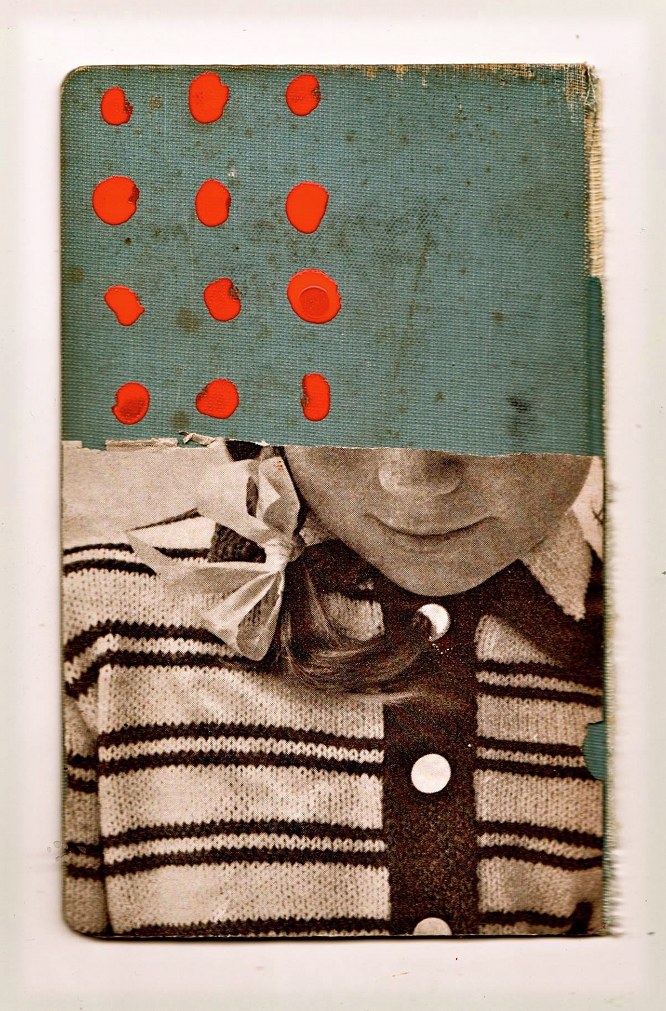
Evan Clayton Horback
The Olympia-based artist frequently brings his signature mixed-media style to a structured treatment of ‘the Surreal Face.’
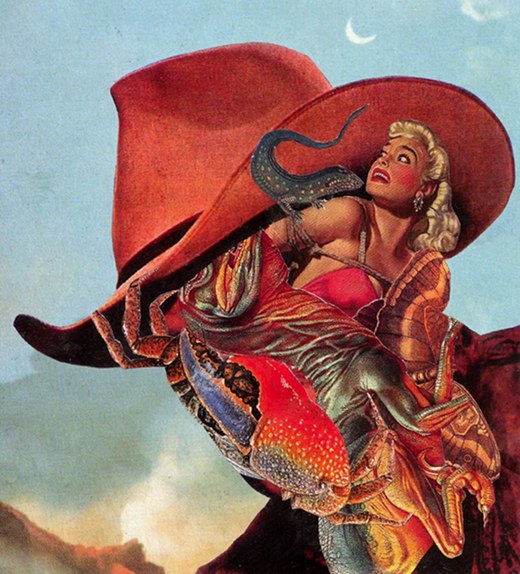
Jon Garbet
His colorful ideas are typically minimalist and characterized by a offbeat sense of humor.
Posted in C Wilkin, E C Horback, J A Dixon, J Garbet, J Lillard, J Škojec, K Ingrez, M Egli, O Descampe, Surrealism, Theme/Variation, Ø Rum | No Comments »























































